#Urban Innovation
Explore tagged Tumblr posts
Text
How Smart Cities Are Getting Smarter: Trends to Watch
Introduction
Smart cities are no longer a futuristic concept; they are becoming a reality in many parts of the world. With advancements in technology, urban areas are transforming into intelligent hubs that enhance the quality of life for their residents. In this blog post, we will explore the latest trends that are making smart cities even smarter. From innovative infrastructure to sustainable solutions, let’s dive into the exciting developments shaping the future of urban living. Read to continue
#Tech Trends#Tags5G connectivity#AI in smart cities#artificial intelligence#blockchain technology#citizen engagement in smart cities#data-driven decision making#future of smart cities#IoT devices#IoT in smart cities#smart cities#smart city technology#smart city trends#smart education#smart healthcare#smart transportation#sustainable smart cities#urban innovation#Technology#Science#business tech#Adobe cloud#Trends#Nvidia Drive#Analysis#Tech news#Science updates#Digital advancements#Tech trends#Science breakthroughs
1 note
·
View note
Text
From Roads to Rooftops: AI and Transformative Urban Innovation (In Person event).

Join us May 23rd, 2024, at 4PM (5PM program) for an exciting exploration of Smart Cities and the intersection of technology and livability.
We look forward to showcasing our Spring Cohort with our Demo Day event on Thursday, May 23rd. We hope you can join us in person for investors and interested parties in the metro DC / Northern Virginia / Maryland ("DMV") region. For those beyond the DMV, please register with this separate Eventbrite for our live-stream of the program.
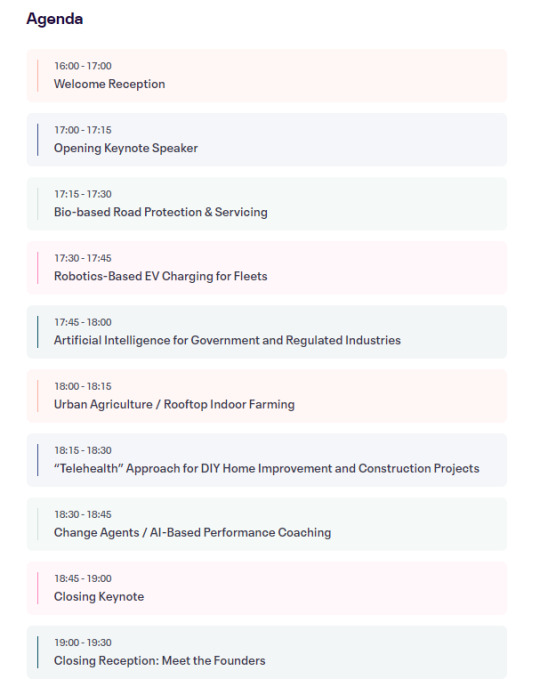
This is an exciting group of founders and associated solutions! One of our companies focuses on bio-based road protection & servicing and is on its way towards revolutionizing the servicing of our roads to save states (or countries and associated taxpayers) literally billions of dollars while keeping road maintenance-based inconvenience to a minimum compared to traditional approaches, all in a manner that dramatically reduces the carbon footprint. For DOTs and urban infrastructure investors, this is a must-see!
But that's just the beginning. We'll feature a solution in urban agriculture, turning rooftops into indoor farms, making fresh, nutritious produce available to apartment dwellers, universities, and food banks in underserved urban populations. We will showcase an application with a “telehealth” approach for DIY home improvement and construction projects that provides one-on-one professional contractor support to your average person engaging in a DIY home project–without having to wait and for a tiny fraction of the cost. We will also feature an EV charging solution focused on fleet charging, circumventing the need to build a large infrastructure (and associated investment) and providing a more efficient and cost-effective approach to meeting the demand for operating EV-based fleets of cars and light trucks.
Last, no demo day 2024 would be complete without AI solutions, and we will feature two. One is aimed at social services and regulated industries, where AI-enabled chatbots for organizations must have 100% confidence in any information provided, so the notion of "Trusted AI" becomes table stakes. And last, as medium and larger organizations, from government to banks to technology firms and more, are challenged to adapt to an increasingly changing world, the change agents and leaders in these organizations can leverage AI to assist in performance management and leading change with cultural alignment, and we have an AI-solution you'll see for this as well.
We welcome you to join us at 4 PM for a reception ahead of the program. This will be a great opportunity to network with other attendees and the founders. For those in person, we'll also host a "meet the founders" reception afterward. This will be a chance to ask questions and learn more about the showcased solutions. This event is made possible thanks to our sponsor ClearBlade, who is driving enterprise digital transformation with IoT and Edge technologies. Whether in person or virtual, we hope you can join us!
#AI-solution#OiT#smart cities#urban innovation#artificial intelligence#AI#from roads to rooftops#digital transformation#light-based technologies#AI-enabled#Fuse Pilot Space
0 notes
Text
Smart City Execution: The Key To Engineering Excellence In Urban Innovation

In the rapidly evolving landscape of urbanization, the concept of smart cities has emerged as a beacon of hope for addressing the complex challenges faced by modern urban centres. Smart city initiatives integrate cutting-edge technologies, data analytics, and sustainable practices to enhance the quality of life for citizens while optimizing resource usage. However, the success of smart cities lies not only in visionary planning but, crucially, in the effective execution of these plans. This blog delves into the significance of smart city execution as the cornerstone of engineering excellence in creating sustainable and efficient urban spaces.
The Blueprint of a Smart City:
Before exploring the execution phase, it’s essential to understand the blueprint of a smart city. Smart cities leverage a network of interconnected technologies to gather and analyze data in real-time. This data-driven approach allows for informed decision-making to enhance efficiency, reduce environmental impact, and improve the overall well-being of citizens.
Key Components Of Smart Cities:
1. Internet of Things (IoT): The integration of IoT devices facilitates the collection of vast amounts of data from various sources, including sensors, cameras, and other connected devices. This data forms the backbone of smart city operations, enabling real-time monitoring and analysis.
2. Data Analytics: Smart cities rely on advanced data analytics to extract meaningful insights from the collected data. This information guides urban planners and policymakers in making informed decisions to optimize services, infrastructure, and resource allocation.
3. Connectivity: Robust communication infrastructure, such as high-speed networks and 5G technology, is vital for seamless connectivity between devices. This ensures efficient data transfer and supports the functioning of smart applications and services.
4. Renewable Energy: A commitment to sustainable practices, including the incorporation of renewable energy sources, is a hallmark of smart cities. Solar panels, wind turbines, and other green technologies contribute to reducing the environmental footprint of urban areas.
Smart city: Execution Challenges:
While the vision for smart cities is ambitious and transformative, the execution phase is riddled with challenges. These challenges include:
1. Integration of Legacy Systems: Many cities already have existing infrastructure that needs to be seamlessly integrated with new smart technologies. Retrofitting and upgrading these systems without disrupting essential services require meticulous planning and execution.
2. Privacy and Security Concerns: The massive amount of data generated by smart city technologies raises concerns about privacy and security. Establishing robust cybersecurity measures and ensuring data protection are crucial to gaining public trust and safeguarding sensitive information.
3. Interdisciplinary Collaboration: Smart city projects involve collaboration between various stakeholders, including government bodies, private enterprises, and the public. Effective communication and coordination among these entities are imperative for successful execution.
The Role of Execution in Engineering Excellence:
1. Project Management: Efficient project management is vital for the successful execution of smart city initiatives. This involves defining clear goals, setting realistic timelines, allocating resources effectively, and adapting to unforeseen challenges.
2. Public Engagement: Engaging with the public throughout the planning and execution phases is essential. Citizen feedback helps refine plans, ensures inclusivity, and fosters a sense of ownership among residents.
3. Continuous Innovation: The dynamic nature of technology requires a commitment to continuous innovation. Smart cities must be adaptable to emerging technologies and evolving needs, necessitating a culture of innovation and flexibility in execution.
In the journey toward engineering excellence in smart cities, execution is the linchpin that transforms visionary plans into tangible, positive outcomes for citizens. By addressing challenges head-on, embracing interdisciplinary collaboration, and prioritizing innovation, smart city execution becomes not just a process but a testament to the commitment to creating sustainable, efficient, and livable urban spaces for generations to come. For MEC, Best Engineering Consultancy in Oman and Mumbai, the successful execution of smart city projects is not just a technical feat; it’s a testament to the resilience and ingenuity of human ingenuity in the face of urban challenges.
Related read: Smart Cities and Engineers: A Perfect Partnership
0 notes
Text
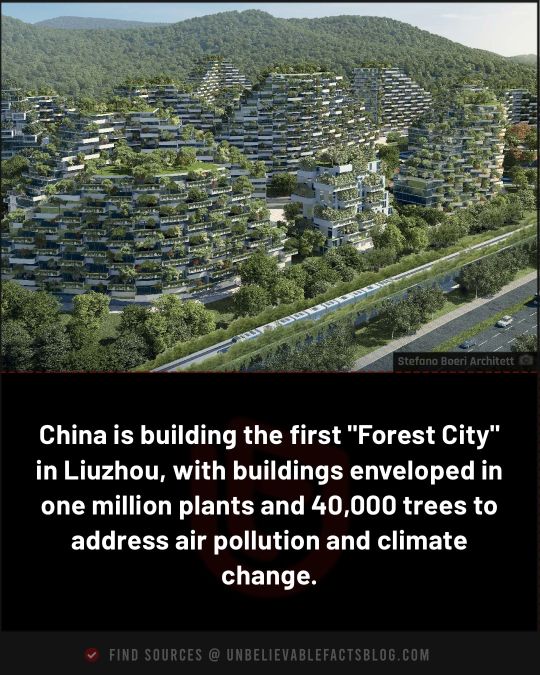
#China#Forest City#Liuzhou#urban planning#green architecture#air pollution#climate change#sustainability#environment#innovation
365 notes
·
View notes
Text




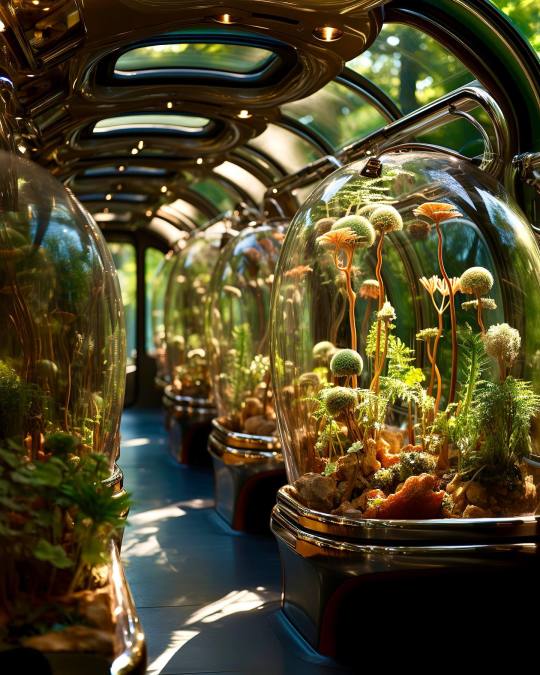


What an Innovative Idea Looks like !
"NatureVent | Transforming Urban Air Quality with Biodiversity Mobility An elegant and innovative urban transporter that seamlessly blends nature's abundance with sustainable mobility. Experience a breath of fresh air as it gracefully navigates the city, revitalizing urban spaces and rejuvenating the spirit with its harmonious fusion of ecological beauty and clean, invigorating oxygen."
//© Harshdeep Arora
#art#artist#Ideas#conceptdesign#innovative#AI Concept#Urban#Transportation#Fresh Air#aesthetics#explore#follow#discover
120 notes
·
View notes
Photo

Futuristic City on the Horizon by Cata2k30 on DeviantArt
#80s#abstract#automobile#background#car#city#colorado#design#futurisc#iluustration#innovation#landscape#retro#skyscrapers#stockstowatch#style#technology#transportation#urban#vehicle#vibrant#retrowave#art#digital art#digital illustration#skyscraper#building#lights#street style#art style
21 notes
·
View notes
Text
Electrochemistry helps clean up electronic waste recycling, precious metal mining
A new method safely extracts valuable metals locked up in discarded electronics and low-grade ore using dramatically less energy and fewer chemical materials than current methods, report University of Illinois Urbana-Champaign researchers in the journal Nature Chemical Engineering.
Gold and platinum group metals such as palladium, platinum and iridium are in high demand for use in electronics. However, sourcing these metals from mining and current electronics recycling techniques is not sustainable and comes with a high carbon footprint. Gold used in electronics accounts for 8% of the metal’s overall demand, and 90% of the gold used in electronics ends up in U.S. landfills yearly, the study reports.
The study, led by chemical and biomolecular engineering professor Xiao Su, describes the first precious metal extraction and separation process fully powered by the inherent energy of electrochemical liquid-liquid extraction, or e-LLE. The method uses a reduction-oxidation reaction to selectively extract gold and platinum group metal ions from a liquid containing dissolved electronic waste.
In the lab, the team dissolved catalytic converters, electronic waste such as old circuit boards, and simulated mining ores containing gold and platinum group metals using an organic solvent. The system then streams the dissolved electronics or ores over specialized electrodes in three consecutive extraction columns: one for oxidation, one for leaching and one for reduction.
“The metals are then converted to solids using electroplating, and the leftover liquid can be treated to capture the remaining metals and recycle the organic solvent,” Su said. “The stream containing the organic extractant is then pumped back to the first extraction column, closing the loop, which greatly minimizes waste.”
An economic analysis of the new approach showed that the new method runs at a cost of two orders of magnitude lower than current industrial processes.
“The social value of this work is really its ability to produce green gold quickly in a single step, greatly improving transparency and trust in conflict free recycled precious metals,”
said postdoctoral researcher Stephen Cotty, the first author of the study.
Su said one of the many advantages of this new method is that it can run continuously in a green fashion and is highly selective in terms of how it extracts precious metals. “We can pull gold and platinum group metals out of the stream, but we can also separate them from other metals like silver, nickel, copper and other less valuable metals to increase purity greatly – something other methods struggle with.”
The team said that they are working to perfect this method by improving the engineering design and the solvent selection.
#solarpunk#solar punk#solarpunk business models#reculture#solarpunk innovation#extracting green gold from electronic waste#e waste#urban mining
7 notes
·
View notes
Text
What to expect from us:
Happy timezone, fellow Wayfarers!
We previously introduced our values, but we also wanted to introduce what you can expect from us in both our original and reposted content.
We explore various themes relevant to our contemporary society and the society we wish to build. Here is some of what to expect:
A highlight on current events.
Discussions of urban design and transportation systems.
Diverse community building and maintenance for online and in person.
Conversations about sustainability.
On topic book, podcast, and video reviews and suggestions.
And so much other content that aligns with our values.
Please engage, share your thoughts, and follow to be a part of the conversation!
-Wayfarer ❤️
#urban design#community building#Sustainable Living#Current#Events#innovations#Media Recommendations#Empowerment#Social impact#solarpunk#hopepunk#Environmentalism#social good#climate solutions#anticapitalism#anticonsumerism#decolonization#wayfarer society
9 notes
·
View notes
Text
The Magic of Street-Side Trees. Beauty, Coolness, and Urban Prosperity.

The beauty, coolness, and urban prosperity brought by street-side trees.
Trees lining urban streets are integral elements of the urban landscape, serving multiple ecological roles and socio-economic functions. In general, incorporating trees along the roads in urban areas can elevate the aesthetic appeal, regulate temperatures, and foster prosperity growth. And if our goal is to enhance the role of cities in driving economic growth and fully utilizing human resources, then we must prioritize making tangible improvements to urban environments.

Trees are crucial components for creating appealing and hospitable urban environments that enhance citizens' psychological and social well-being. They play a vital role in reducing air temperature and humidity, which helps alleviate the effects of heat waves and global warming. Trees bear witness to the history, culture, and identity of cities, which they preserve and pass on to future generations. In addition to their undeniable beauty, trees are valuable allies in the fight against climate change.
They provide a range of local benefits that are often ignored beyond the global role of absorbing carbon dioxide. This article aims to increase awareness among readers about the importance of trees for cities and the planet. It seeks to motivate all of us to value, preserve, and protect the urban tree heritage through a participatory and accountable manner that involves citizens and institutions.

Street-side trees are more than just beautiful to look at. They are an essential resource for cities, providing numerous benefits to residents' health, well-being, and quality of life. In their article on Monocolo, Paolo Massi and Giulia Papaleo highlight the main advantages of trees in urban areas. La magia degli alberi lungo le strade. Bellezza, frescura e prosperità urbana
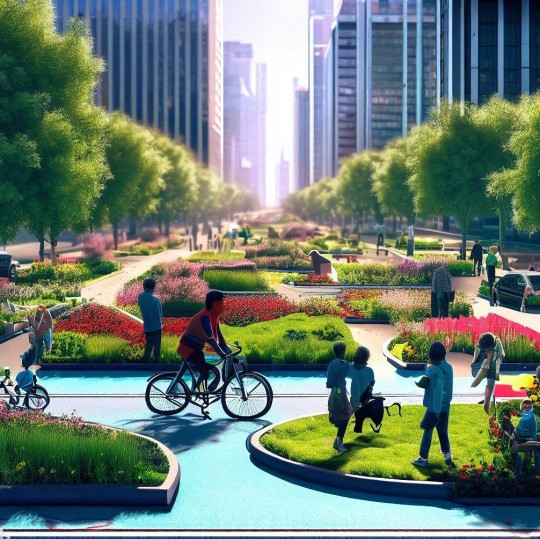
Among the benefits that trees bring to the urban environment, we can mention:
Trees perform ecological, social, and economic functions that contribute to the well-being and development of cities. They help to reduce air pollution by capturing particles, filtering harmful gases, and producing oxygen. Trees also absorb carbon from the atmosphere and store it in their wood, making them beneficial for climate change mitigation. Additionally, trees create shade, cool the air, and reduce energy consumption for cooling buildings. They prevent flooding, improve water quality, and increase biodiversity by providing shelter and food for many species. Trees enhance the urban landscape, mitigate noise, and even increase the value of properties.

Moreover, they promote physical and mental health by stimulating physical activity, reducing stress, and improving mood and concentration.
Therefore, roadside trees are a valuable resource for cities and their inhabitants. It is critical to protect, care for, and increase them through various means, such as public policies, private actions, and guaranteed maintenance over time, recognizing their fundamental role in the quality of urban life so that maintenance, which develops jobs, in particular, is 'guaranteed' over time,

Urban forestation and eco-neighborhoods.
Urban forestation refers to designing and creating green spaces in urban and peri-urban areas to incorporate nature into the landscape. It is important to both develop new green spaces and enhance existing ones.
Eco-neighborhoods serve as an example of sustainable and livable urban environments. They are designed considering the environment and the health of their residents. Sustainability principles are followed to improve the landscape and economic assets of the urban context. The design of an environmentally sustainable neighborhood aims to reduce its environmental impact during construction, throughout its life cycle, and even during decommissioning while prioritizing the comfort of its residents. These neighborhoods are built to improve people's quality of life by emphasizing energy conservation, renewable energy, environmentally friendly materials, reducing water and waste consumption, and promoting sustainable mobility. They are tangible parts of the city that contribute to the well-being of its inhabitants.
In addition, urban forestation is another example of how urban environments can be made more livable and sustainable. We can seamlessly blend nature into the urban landscape by integrating street trees, gardens, and parks. They represent elements of nature that help purify the air we breathe, capturing pollutants, storing carbon, and mitigating the climate of cities.
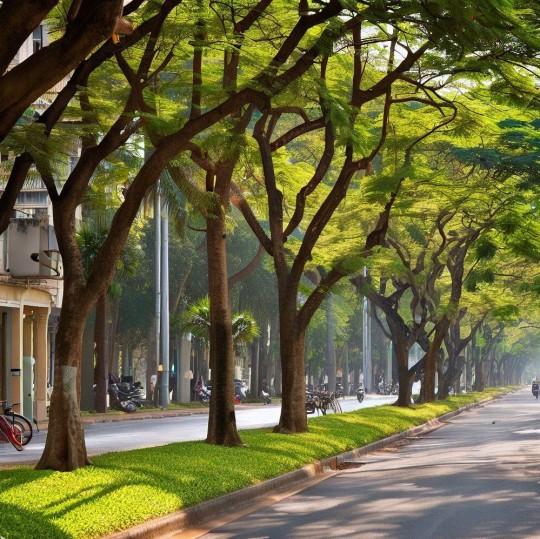
In summary, street-side trees are not just a decorative element but a proper green infrastructure that improves the quality of urban life. Therefore, It is vital to encourage planting, caring for, and preserving trees in urban areas, with the participation of government institutions, businesses, and residents, in order to achieve a shared vision to promote sustainable progress.
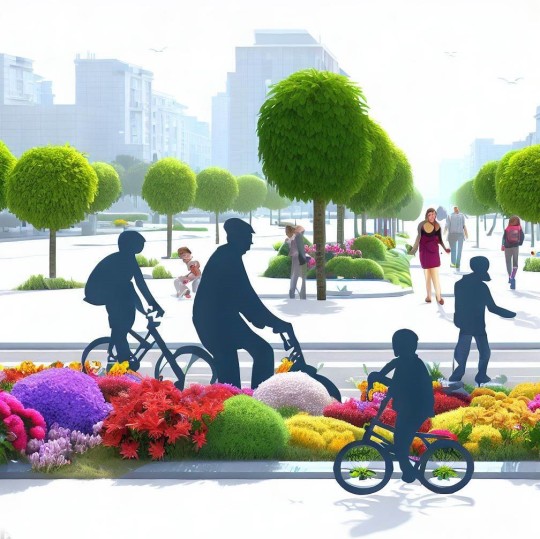
🟠 Italiano
Intro
Gli alberi sono elementi essenziali per creare paesaggi urbani attraenti e accoglienti, che favoriscono il benessere psicologico e sociale dei cittadini. contribuiscono a ridurre la temperatura e l'umidità dell'aria, mitigando gli effetti delle ondate di calore e del riscaldamento globale. Essi sono testimoni della storia, della cultura e dell'identità delle città, che conservano e trasmettono alle generazioni future. Alleati nella lotta ai cambiamenti climatici, oltre alla loro innegabile bellezza offrono una serie di benefici locali che spesso tendiamo a trascurare (al di là dei benefici globali di assorbimento dell’anidride carbonica). Questo articolo quindi ha lo scopo di sensibilizzare i lettori sull'importanza degli alberi per le città e per il pianeta, invitandoli a conoscere, apprezzare e tutelare il patrimonio arboreo urbano coinvolgendo i cittadini e le istituzioni in un processo partecipativo e responsabile.
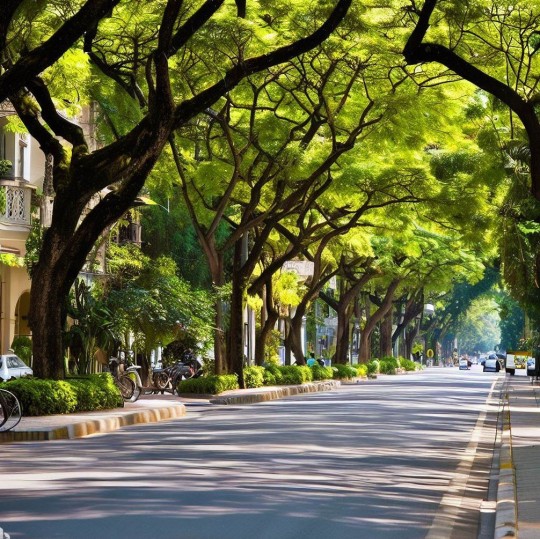
La magia degli alberi lungo le strade. Bellezza, frescura e prosperità urbana.
Gli alberi sono una risorsa preziosa per le città, non solo per il loro contributo alla mitigazione dei cambiamenti climatici, ma anche per i molteplici benefici che apportano alla salute, al benessere e alla qualità della vita dei cittadini. In questo articolo del Monocolo gli autori Paolo Massi e Giulia Papaleo, vogliono illustrare alcuni dei principali vantaggi che gli alberi offrono alle aree urbane e alle persone che le abitano. La magia degli alberi lungo le strade. Bellezza, frescura e prosperità urbana

La magia degli alberi lungo le strade dunque non si limita alla loro estetica. Gli alberi sono elementi essenziali per il benessere e lo sviluppo delle città, in quanto svolgono funzioni ecologiche, sociali ed economiche. Tra i vantaggi che gli alberi apportano all'ambiente urbano, possiamo citare:
Riduzione dell'inquinamento atmosferico: gli alberi catturano le particelle sospese nell'aria, filtrano i gas nocivi e producono ossigeno.
Mitigazione del cambiamento climatico: gli alberi assorbono il carbonio dall'atmosfera e lo immagazzinano nel loro legno, contribuendo a ridurre l'effetto serra.
Regolazione termica: gli alberi creano ombra e rinfrescano l'aria attraverso la traspirazione, diminuendo la temperatura e il consumo energetico per il raffreddamento degli edifici.
Conservazione del suolo e dell'acqua: gli alberi riducono l'erosione del suolo, aumentano la sua capacità di infiltrazione e ritardano il deflusso delle acque piovane, prevenendo le inondazioni e migliorando la qualità dell'acqua.
Incremento della biodiversità: gli alberi offrono rifugio e cibo a molte specie animali e vegetali, arricchendo la diversità biologica delle città.
Valorizzazione del paesaggio urbano: gli alberi creano scenari naturali, armonizzano l'architettura, attenuano il rumore e aumentano il valore immobiliare delle proprietà.
Promozione della salute e del benessere umano: gli alberi favoriscono la salute fisica e mentale delle persone, stimolando l'attività fisica, riducendo lo stress, migliorando l'umore e la concentrazione.
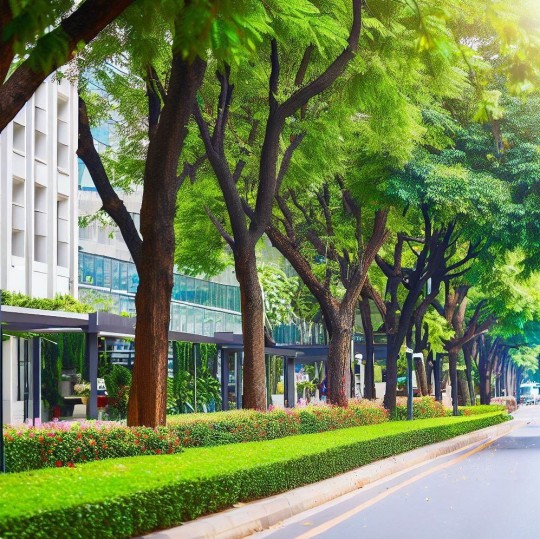
Gli alberi e le aiuole a verde lungo le strade sono quindi una risorsa preziosa per le città e i loro abitanti. Per questo motivo, è importante proteggerli, curarli e incrementarli, attraverso politiche pubbliche e azioni private che ne riconoscano il ruolo fondamentale per la qualità della vita urbana affinché la manutenzione, che sviluppa posti di lavoro, in particolare venga 'garantita' nel tempo.
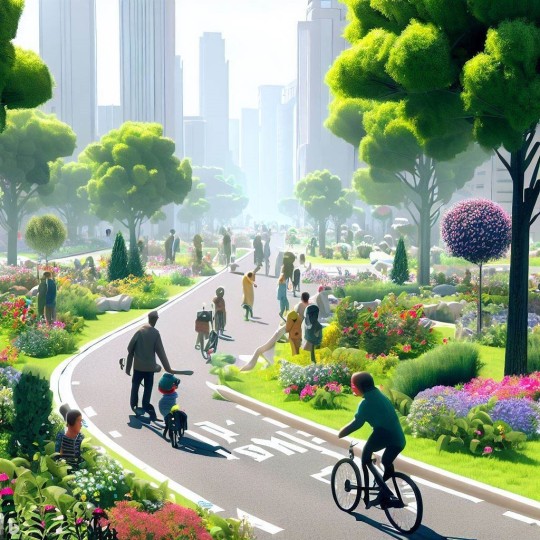
La forestazione urbana e gli ecoquartieri
Con il termine forestazione urbana si intende la progettazione e lo sviluppo di aree verdi urbane e periurbane, facendo della natura un'importante protagonista di questo paesaggio. Chiaramente è importante non solo progettare e sviluppare nuove aree verdi, ma anche rivalorizzare e riappropriarsi di quelle esistenti.
Certo! Gli ecoquartieri sono un esempio di ambienti urbani sostenibili e vivibili. Sono quartieri costruiti nel rispetto dell’equilibrio ambientale e della salute delle persone che vi abitano. Sono conformi ai principi della sostenibilità e puntano alla valorizzazione del patrimonio paesaggistico ed economico del contesto urbano in cui sono inseriti. La progettazione di un quartiere ecosostenibile punta a ridurne l’impatto ambientale: dalla fase di costruzione, al ciclo di vita, fino alla sua dismissione, senza mai dimenticare il comfort di chi lo vive. Si tratta di vere e proprie porzioni di città edificate con l’obiettivo di innalzare il livello di qualità della vita e sono realizzate ponendo l’accento su: risparmio energetico; uso delle energie rinnovabili e di materiale ecologico; riduzione del consumo di acqua e di rifiuti; promozione della mobilità sostenibile.
Inoltre, la forestazione urbana è un altro esempio di come gli ambienti urbani possono essere resi più vivibili e sostenibili. Le alberature stradali, i giardini e i parchi urbani rappresentano degli elementi di natura che contribuiscono a purificare l’aria che respiriamo, catturando sostanze inquinanti, immagazzinando carbonio e mitigando il clima delle città.
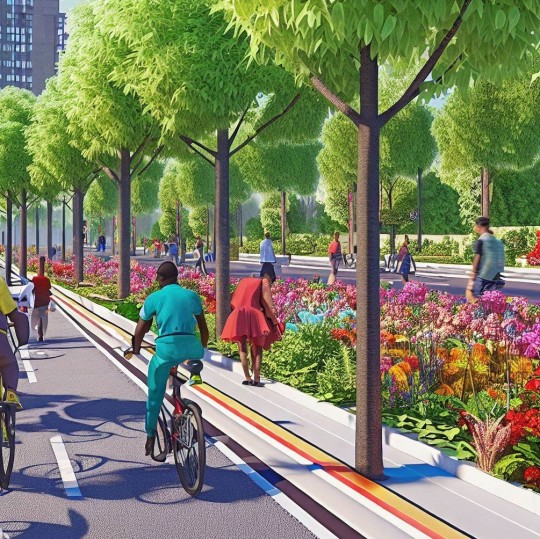
Come si può notare, gli alberi lungo le strade non sono solo un elemento decorativo, ma una vera e propria infrastruttura verde che migliora la qualità della vita urbana. Per questo motivo, è importante promuovere la piantumazione, la manutenzione e la protezione degli alberi nelle città, coinvolgendo le amministrazioni pubbliche, le imprese e i cittadini in una visione condivisa di sviluppo sostenibile.
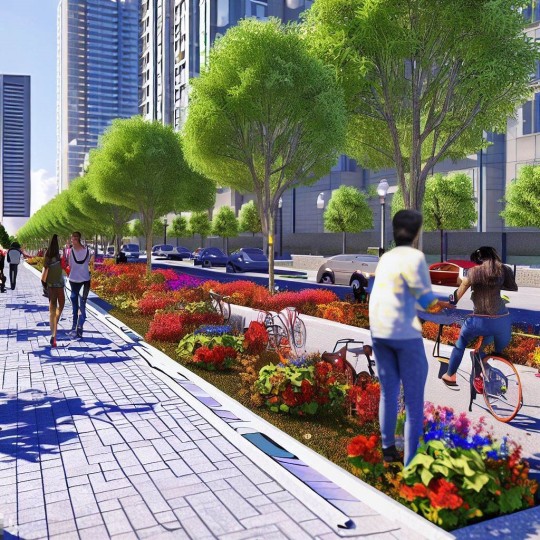
images created by The Board Behind © 2023
More related topics on this matter you might like:
Landscape Architecture: self-reflection on improving and enhancing our cities' run-down suburbs. English /Italian
Give color to the city to celebrate the joy of living.
I appreciate your kind presence and attention on this matter. Thank you for joining us today.
⏩ The Board Behind
#the board behind#sviluppo sostenibile#urban environments#urban tree heritage#ecological restoration#social growth#economic growth#city development#well being#urban living#urban life#heat wave#heat islands#sustainable progress#social innovation
15 notes
·
View notes
Text
#nipsey hussle#ermias asghedom#hussle tha great#marathon monday#marathon mondays#the marathon clothing#the marathon continues#tmc#vertically integrated brand#visionary#prolific#so gifted#2pac of my generation#slauson boy#crenshaw#slauson#crenshaw and slauson#60th street#60th street legend#rollin 60s#king of la#los angeles#hustler#hussle and motivate#innovative#community leader#community leaders#legendary moves#legend#urban legend
2 notes
·
View notes
Text
How Smart Cities Are Getting Smarter: Trends to Watch
Introduction
Smart cities are no longer a futuristic concept; they are becoming a reality in many parts of the world. With advancements in technology, urban areas are transforming into intelligent hubs that enhance the quality of life for their residents. In this blog post, we will explore the latest trends that are making smart cities even smarter. From innovative infrastructure to sustainable solutions, let’s dive into the exciting developments shaping the future of urban living. Read to Continue..
#Tech Trends#Tags5G connectivity#AI in smart cities#artificial intelligence#blockchain technology#citizen engagement in smart cities#data-driven decision making#future of smart cities#IoT devices#IoT in smart cities#smart cities#smart city technology#smart city trends#smart education#smart healthcare#smart transportation#sustainable smart cities#urban innovation#Technology#Science#business tech#Adobe cloud#Trends#Nvidia Drive#Analysis#Tech news#Science updates#Digital advancements#Tech trends#Science breakthroughs
1 note
·
View note
Text





#Streetwear#urban fashion#X2the9 gear#stylish hoodies#cool T-shirts#trendy sweats#casual jackets#urban street style#skate culture#hip-hop fashion#limited edition gear#exclusive X2the9 apparel#graphic tees#designer hoodies#innovative streetwear#underground fashion#statement jackets#premium sweatshirts#contemporary urban wear#fashion forward#lifestyle brand#pop culture merchandise#high-quality streetwear#edgy designs#artistic apparel#youth fashion#innovative designs#urban chic#trendsetting streetwear#X2the9 exclusive designs.
3 notes
·
View notes
Text
#Bullet trains#high-speed#Japan's freight sector#perishable goods#fresh fruits#live seafood#high-speed rail tracks#local communities#food producers#railway operators#urban centers#COVID-19 pandemic#innovative solutions#seat sales#freight services#Hayabusa No. 72 train#Mutsu Bay#apple pies#cargo capacity#truck driver shortage#working hours#JR East#Hakobyun#seafood#vegetables#flowers#fresh sashimi#Yobuko squid#Karatsu#Saga Prefecture
2 notes
·
View notes
Text

The Maldives Floating City, set to open in 2027, will provide eco-friendly, floating residences for 20,000 people, adapting to rising sea levels.
#Maldives#floating city#climate change#sea level rise#eco-friendly architecture#sustainable living#urban planning#2027#innovative design
91 notes
·
View notes
Text
10 Indispensable Tools For Successful Farming
Agriculture is one of the most important industries in the world, providing us with essential food and supplies. As such, having the right tools to successfully farm is key. Without the correct agricultural tools, farmers would not be able to take full advantage of the land they are working with.(more)
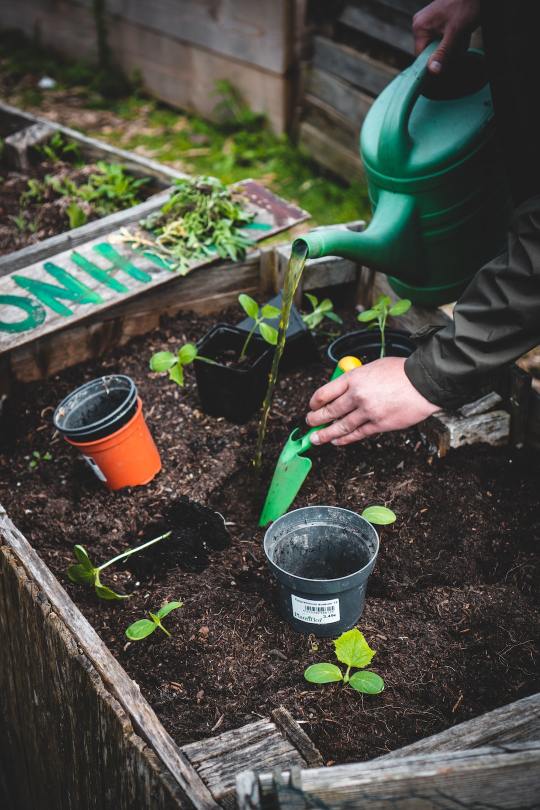
#successful farming#successful farming tv show#successful farming magazine#farming#tools for successful snail farming#agriculture farming#urban farming#farming business#essential tools for snail farming#farming business ideas#organic farming#farming tools that have helped farmers for centuries#most profitable farming business#innovative tools for snail farming#snail farming tools#profitable farming#precision measuring tools for snail farming
2 notes
·
View notes
Text
Exploring the Future of Commuting with Velotric
The E-Bike industry is rapidly evolving, and Velotric is at the forefront of this exciting transformation. Known for their innovative designs and commitment to quality, Velotric has become a favorite among urban commuters seeking a reliable and stylish mode of transport.
One standout model is the Velo Electric Commuter Bike, which combines sleek aesthetics with cutting-edge technology. This bike is perfect for those navigating city streets, offering a smooth ride and impressive battery life. With features like adjustable pedal assist and a lightweight frame, the Velo Electric Commuter Bike makes commuting not just easier, but also more enjoyable.
Whether you're heading to work or exploring the city, Velotric ensures that every ride is a positive experience. The company's dedication to sustainability and eco-friendly transportation options is commendable, making it a great choice for environmentally conscious riders.
Join the movement towards better commuting solutions and discover the joy of riding with Velotric's Velo Electric Commuter Bike!
#transportation innovation#lightweight frame#battery life#E-Bike#eco-friendly#Velo Electric Commuter Bike#urban transport#urban commuters
0 notes